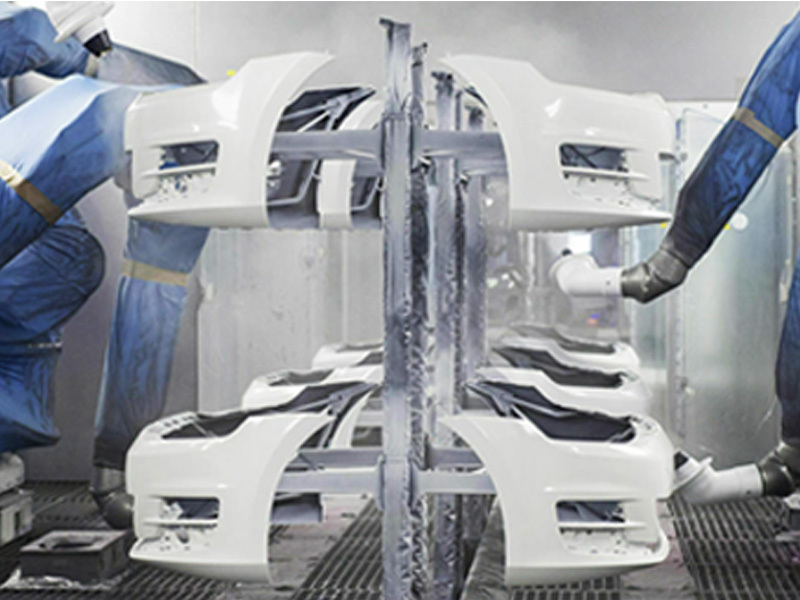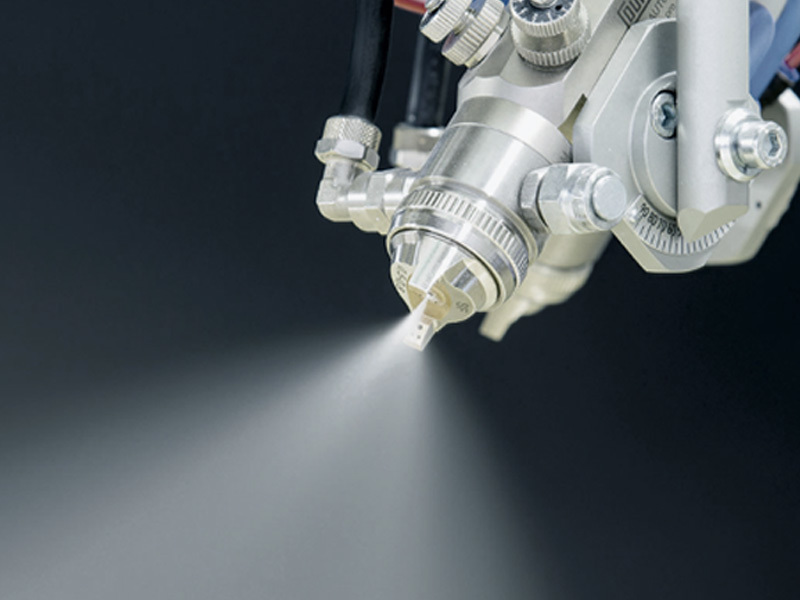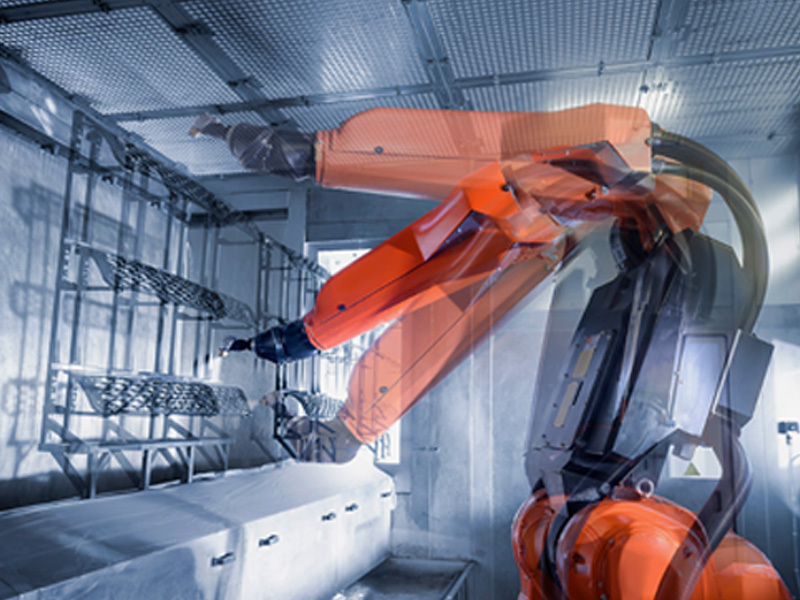Revolutionizing the Industry: The Rise of China Automotive Paint Robots
Release time:
2025-04-29
Revolutionizing the Industry: The Rise of China Automotive Paint Robots Table of Contents 1. Introduction to Automotive Paint Robots 2. Historical Evolution of Paint Technologies in Auto Manufacturing 2.1 From Manual to Automated Painting 2.2 The Role of Robotics in Industrial Painting 3. The Technological Advancements Driving Paint Robots 3.1 AI and Machine Learning Integration 3.2

Revolutionizing the Industry: The Rise of China Automotive Paint Robots
Table of Contents
1. Introduction to Automotive Paint Robots
2. Historical Evolution of Paint Technologies in Auto Manufacturing
2.1 From Manual to Automated Painting
2.2 The Role of Robotics in Industrial Painting
3. The Technological Advancements Driving Paint Robots
3.1 AI and Machine Learning Integration
3.2 Robotics and Precision Engineering
4. Benefits of Automotive Paint Robots in the Chinese Market
4.1 Increased Efficiency and Productivity
4.2 Enhanced Quality and Consistency
4.3 Cost-Effectiveness in Production
5. Key Players in China’s Automotive Paint Robot Market
5.1 Leading Manufacturers and Innovators
5.2 Market Share and Competitive Landscape
6. Challenges Facing the Adoption of Automotive Paint Robots
6.1 Initial Investment and Cost Considerations
6.2 Workforce Training and Transition
7. Future Trends in Automotive Paint Technology
7.1 Sustainable Practices and Eco-Friendly Solutions
7.2 The Future of Automation in the Automotive Industry
8. FAQs: Common Questions about Automotive Paint Robots
1. Introduction to Automotive Paint Robots
The automotive industry is experiencing a seismic shift, with **China** emerging as a leader in the adoption of innovative technologies. One of the most significant advancements is the introduction of **automotive paint robots**. These state-of-the-art machines are revolutionizing how automobiles are painted, enhancing efficiency, precision, and quality. As the industry evolves, it's crucial to understand the role of these robots in shaping the future of automotive manufacturing.
2. Historical Evolution of Paint Technologies in Auto Manufacturing
The journey of automotive paint technologies has been marked by remarkable innovations.
2.1 From Manual to Automated Painting
In the early days of automotive manufacturing, painting was a manual process that required significant labor. Workers applied paint by hand, leading to inconsistencies in application and quality. The introduction of spray guns in the mid-20th century was a game-changer, increasing efficiency but still requiring human oversight.
2.2 The Role of Robotics in Industrial Painting
As technology advanced, the automotive industry began to recognize the potential of robotics. The first robotic arms were introduced in the 1980s, automating the painting process and significantly reducing labor costs. Today's automotive paint robots offer **unprecedented precision**, further enhancing the quality and efficiency of the painting process.
3. The Technological Advancements Driving Paint Robots
Automation in automotive painting is propelled by cutting-edge technology, which continuously enhances the capabilities of paint robots.
3.1 AI and Machine Learning Integration
Integrating **artificial intelligence (AI)** and **machine learning** into paint robotics allows for adaptive learning. Robots can analyze past applications to optimize future ones, ensuring a more consistent finish and reducing waste. This level of intelligence helps manufacturers achieve a high standard of quality while minimizing material costs.
3.2 Robotics and Precision Engineering
Modern paint robots are designed with sophisticated engineering, enabling exact movements and fine control during the spraying process. This precision translates into a flawless finish, reducing the chances of errors and the need for rework, ultimately saving both time and money.
4. Benefits of Automotive Paint Robots in the Chinese Market
The adoption of automotive paint robots in China offers myriad advantages that contribute to the overall success of manufacturers.
4.1 Increased Efficiency and Productivity
Paint robots can operate continuously, leading to a significant increase in production rates. The ability to work around the clock without breaks enhances overall productivity and allows manufacturers to meet large-scale demands more effectively.
4.2 Enhanced Quality and Consistency
With robotic arms executing paint applications, the results are far more consistent than manual applications. Robots can adjust their spray patterns and speed in real-time, ensuring a uniform coat that meets exact specifications. This consistency is crucial, especially in the competitive automotive market.
4.3 Cost-Effectiveness in Production
Although the initial investment in paint robotics can be substantial, the long-term savings are undeniable. Reduced labor costs, minimal waste, and improved efficiency contribute to significant overall cost reductions, making them an attractive option for manufacturers.
5. Key Players in China’s Automotive Paint Robot Market
As the market for automotive paint robots expands, several key players are leading the way.
5.1 Leading Manufacturers and Innovators
Companies like **ABB**, **KUKA**, and **Yaskawa** have established themselves as industry leaders in the production of paint robots. Their commitment to innovation and quality positions them at the forefront of the automotive paint robotics market in China.
5.2 Market Share and Competitive Landscape
The competitive landscape showcases a mix of global giants and emerging local players. Local Chinese firms are increasingly developing their solutions, contributing to a dynamic market that fosters innovation and competition.
6. Challenges Facing the Adoption of Automotive Paint Robots
Despite the numerous benefits, there are challenges that manufacturers must navigate when transitioning to paint robots.
6.1 Initial Investment and Cost Considerations
While the long-term savings are substantial, the upfront costs for purchasing and integrating paint robots can be high. Manufacturers must carefully evaluate their budgets and ROI to justify the investment.
6.2 Workforce Training and Transition
Adopting new technology necessitates skilled personnel to operate and maintain the robots. Upgrading the workforce's skills requires investment in training programs and can be a barrier for some manufacturers.
7. Future Trends in Automotive Paint Technology
As we look forward, several trends are poised to shape the future of automotive paint technology.
7.1 Sustainable Practices and Eco-Friendly Solutions
The automotive industry is increasingly focusing on sustainability. Paint robots are being designed to minimize waste and utilize eco-friendly materials, aligning with global environmental initiatives and consumer expectations.
7.2 The Future of Automation in the Automotive Industry
As automation continues to evolve, we can expect to see even more sophisticated paint robots capable of adapting to various production needs. The integration of IoT technology will further enhance capabilities, allowing for real-time monitoring and adjustments during the painting process.
8. FAQs: Common Questions about Automotive Paint Robots
1. What are automotive paint robots?
Automotive paint robots are automated machines designed to apply paint to vehicles with high precision and efficiency, significantly improving the quality and consistency of the paint application process.
2. How do automotive paint robots improve efficiency?
These robots can operate continuously, ensuring that production lines run without interruption, which leads to increased output and faster turnaround times.
3. What are the main benefits of using paint robots in manufacturing?
The primary benefits include enhanced quality and consistency, reduced labor costs, increased productivity, and minimized material waste.
4. Are paint robots expensive?
While the initial investment can be high, the long-term savings on labor and materials often justify the cost.
5. How does automation affect the workforce in the automotive industry?
Automation can lead to job displacement but also creates opportunities for new roles in robotic programming, maintenance, and management. Proper training is essential to facilitate this transition.
Conclusion
The rise of **automotive paint robots** in China signifies a transformative shift in the manufacturing landscape. These innovative machines not only enhance efficiency and productivity but also ensure a level of quality that manual processes cannot achieve. As the industry continues to evolve, embracing automation and technological advancements will be crucial for manufacturers looking to remain competitive. By overcoming initial challenges and investing in sustainable practices, the future of automotive paint applications looks promising, positioning China as a leader in this essential sector.











